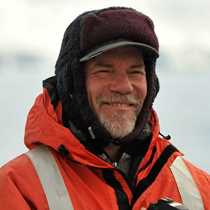Helsinki
This morning we sailed into the Gulf of Finland in light seas and a pearly gray fog. Helsinki lay ahead, but first we had time for a leisurely breakfast and our LEX forum for this journey, a discussion of the history and future of the European Union, led by David Barnes. After a clear and insightful introduction, David opened the floor for questions and comments, touching off a lively hour of intellectual exploration. Several of the countries we have visited in the past few days are new members of the EU, so it was quite interesting to consider in detail the ramifications of this new and hopeful chapter in their histories.
By lunchtime we were secure at the dock in the capital of our sixth Baltic nation. By comparison to some we have seen, Helsinki is a young city, but strolling through its busy streets we were impressed by the number of attractive civic buildings from the Nineteenth Century, many of them designed by the great German architect Carl Ludwig Engel. Another highlight was the Uspenski Russian Orthodox Cathedral with its massive granite columns supporting the ornate cupola.
Lying as it does along an important trade route between Russia and the powers of the West, Helsinki also has a long military history. In the later afternoon we saw evidence of this firsthand when we toured the island fortress of Soumenlinna. Really a group of islands connected by bridges and causeways, Soumenlinna was built in turn to the armies of Sweden and Russia and then hosted an important Soviet shipyard that now works in restoration and maintenance of historic wooden vessels. Bundled up against a chill wind, we walked through the elaborate battlements and thought of the harsh lives of the men who lived and worked here.
In the early evening the clouds parted and the sun appeared, setting slowly through a long, lovely twilight. Many of us took advantage of our late departure for an after-dinner stroll in the lingering light, a beautiful conclusion to the day.
This morning we sailed into the Gulf of Finland in light seas and a pearly gray fog. Helsinki lay ahead, but first we had time for a leisurely breakfast and our LEX forum for this journey, a discussion of the history and future of the European Union, led by David Barnes. After a clear and insightful introduction, David opened the floor for questions and comments, touching off a lively hour of intellectual exploration. Several of the countries we have visited in the past few days are new members of the EU, so it was quite interesting to consider in detail the ramifications of this new and hopeful chapter in their histories.
By lunchtime we were secure at the dock in the capital of our sixth Baltic nation. By comparison to some we have seen, Helsinki is a young city, but strolling through its busy streets we were impressed by the number of attractive civic buildings from the Nineteenth Century, many of them designed by the great German architect Carl Ludwig Engel. Another highlight was the Uspenski Russian Orthodox Cathedral with its massive granite columns supporting the ornate cupola.
Lying as it does along an important trade route between Russia and the powers of the West, Helsinki also has a long military history. In the later afternoon we saw evidence of this firsthand when we toured the island fortress of Soumenlinna. Really a group of islands connected by bridges and causeways, Soumenlinna was built in turn to the armies of Sweden and Russia and then hosted an important Soviet shipyard that now works in restoration and maintenance of historic wooden vessels. Bundled up against a chill wind, we walked through the elaborate battlements and thought of the harsh lives of the men who lived and worked here.
In the early evening the clouds parted and the sun appeared, setting slowly through a long, lovely twilight. Many of us took advantage of our late departure for an after-dinner stroll in the lingering light, a beautiful conclusion to the day.


